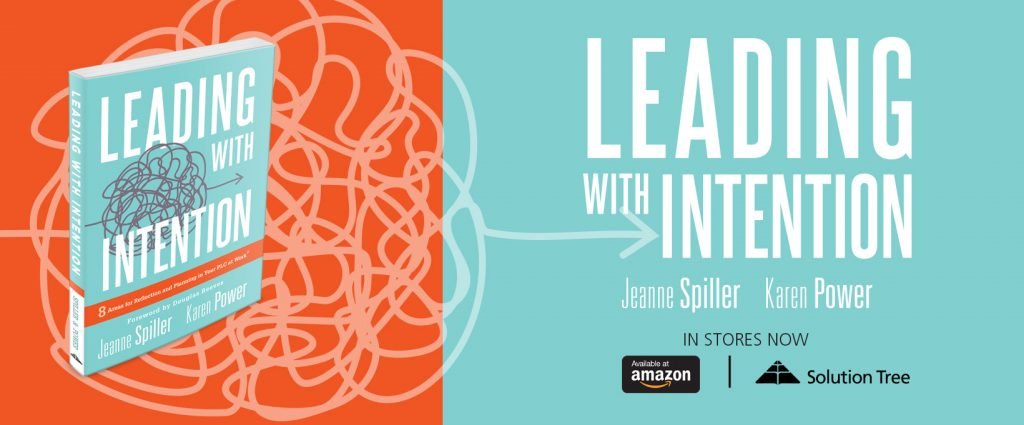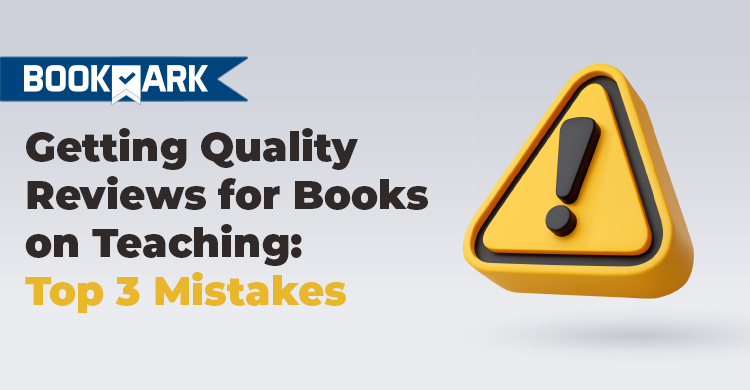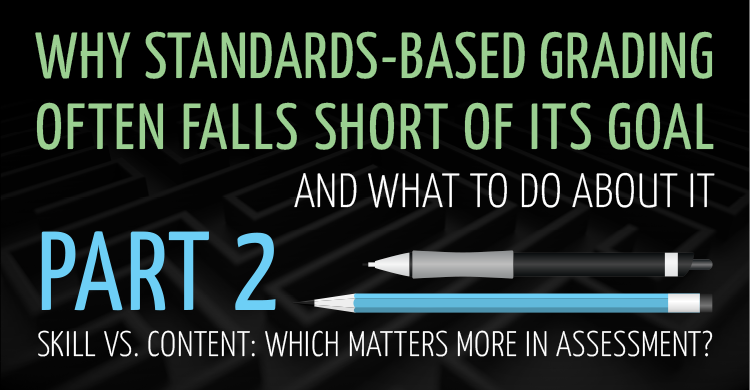Based on Leading with Intention
It is that time of the year again. School is in session (or soon will be), and the journey begins.
Educators are preparing for the school year, which includes thinking about professional learning and what is needed in order to improve so that all students master grade-level expectations—or higher.
Which path is the right one?
How do teachers and leaders decide what direction to take for professional learning? There is always so much to learn and not enough time. Expectations and demands on educators continue to grow, but time for professional learning remains the same. It is critical that the time is used well.
As educators begin to think about professional learning, several questions arise. Questions like: What activities will we participate in? What speakers will I bring in? What conferences should I send people to or go to myself? How do I know what teachers need? While these are the most typical questions, they are not going to provide the answers that you need. In this blog entry, we want to help you consider your intentional focus and decisions that should be made around growing teachers and leaders professionally.
In Leading with Intention, we acknowledge the real struggle of determining and honoring your focus. We recognize that we may start the year with great intentions, but distractors quickly pull us away from the course we know we should be on. Creating your road map for professional learning takes time and planning. Deep implementation means you are able to stay true to what you set out to accomplish. In this blog, we offer guidance and support of this journey.
How to make your decision
A great resource we use in our coaching work is from Learning Forward, an organization devoted to leveraging the power of professional learning to effect positive and lasting change. Their resource, Standards for Professional Learning, provides a guide for educators in making thoughtful decisions about professional learning that leads to learning for students. The seven standards include learning communities, leadership, resources, data, learning designs, implementation, and outcomes.
One common thread throughout the standards is the need to have evidence of what we need and what is working. For example, the Learning Forward data standard:
- Indicates professional learning that increases educator effectiveness and results for all students
- Uses a variety of sources
- Includes types of student, educator, and system data to plan, assess, and evaluate professional learning (Learning Forward Standards for Professional Learning Quick Reference Guide, 2011)
Are you a principal thinking about the needs of your teachers? How do you know what they need? What data will you review to decide? How will you develop a plan or road map for the initial learning and ongoing support? Are you basing your professional learning decisions for increasing instructional effectiveness, for example, on research-based practices as well as what you observe in your classrooms? Are you surveying your teachers and asking them what they know or do not know about specific instructional strategies such as differentiation?
Are you collecting data about the learning in your school? Consider the learning designs standard; it suggests that when educators begin to plan professional learning, they purposefully integrate theories, research, and models of human learning to achieve intended outcomes. The standards guide us to be more intentional about our professional learning plan, and this comes first from asking the right questions and making ourselves aware of the needs of others.
In our work in schools and districts, we are often asked to support professional learning. Some schools have a well-thought-out plan of action that is aligned to what is suggested in the Learning Forward data standard. The plan is based on school or system evidence and the identified needs of teachers, or a focus on a few prioritized initiatives based on that evidence.
Sadly, a professional learning plan sometimes comes about from a reaction to an observation or event in the school or district. For example, a classroom visit focused on guided reading does not go well, so the principal responds by calling an all-faculty meeting to conduct a workshop on what guided reading should look like in the classroom. Now, this might be much-needed support for teachers; however, this does not sound like intentional, well-thought-out professional learning. There are better ways to go about introducing and implementing what is expected in classroom practice.
In Leading with Intention, we suggest that leaders can benefit greatly from truly knowing what their priorities are and developing their plans for the school year around these priorities. Taking the time to analyze school-wide and teacher data will guide leaders in developing goals and outcomes for the year and help build an intentional road map. Consider data from a school-wide survey that indicates that staff would like to be more of an active part of school leadership. This data leads to the decision to build a shared leadership model in your school. You can either put people in a room and expect shared leadership to happen, or you can be very intentional and build a plan for it to happen.
Simpler can be better
The template below can help you consider how you decide what professional learning is needed in the school. (A completed sample follows the template.) Building the “why” is as important as the “what” of expectations. In Leading with Focus, Mike Schmoker reminds us there is a need for simplicity. He states, “Simplicity demands that leaders incessantly clarify and reinforce these priorities … Focused, straightforward efforts can enable leaders to achieve significant, transformational improvements within one or two school years” (page 5).
Professional Development Protocol Planning Template
| Priority | Teacher/Staff Needs | Outcome Desired | Action Plan | How will you monitor your success? |
| To build a shared leadership model | ||||
| To develop a professional learning community focused on collaboration, learning, and results | ||||
| To improve instructional practices |
Sample of Professional Development Protocol Planning
| Priority | Teacher/Staff Needs | Outcome Desired | Action Plan | How will you monitor your success? |
| To build a shared leadership model | Teachers need to understand why a shared leadership model would help our school.
Teachers who are asked to part of the guiding coalition will need to know what is expected and how we are going to work together. |
Teachers become part of our evidence-based decision- making practices at the school.
Teacher leaders guide the implementation of Professional Learning Communities at Work in our school. |
Set a biweekly schedule for our meetings.
Each meeting includes a professional development on the “why” and “what” of shared leadership. The use of data at each of our meetings will include modeling how to use a data protocol. |
Learning Forward Standards for Professional Learning—Leadership, Data, Outcomes |
| To develop a professional learning community focused on collaboration and learning and results. | Our student achievement is low, and teachers are working in isolation, trying to meet the needs of their students.
It is important to build common understanding of why, what, and how a professional learning culture can help our school. |
Our school works as a professional learning community to meet the needs of our students. | Create a yearlong plan of professional development that begins with the “why” of this work (mission, vision, collective commitments and goals).
Continue to build common understanding of how to implement collaborative teams that work to answer the four PLC questions. Support teacher understanding of the three big ideas of PLCs. |
|
| To improve instructional practices. | Our overall data shows that our Tier I instruction is very weak across the school or district.
Our elementary teachers do not understand guided reading strategies. We expect our teachers to do “math talks,” but we have never shown them how. Our secondary teachers have told us time and time again that they do not understand differentiation or how to effective have small-group instruction. |
Teachers will effectively implement research-based instructional practices. | Based on student data and classroom observations, a yearlong professional development plan will be built to support effective instruction.
This plan will include workshops, guided practice, coaching and feedback, and peer-to-peer support. Classroom observations will be focused on providing coaching and support based on clear expectations of the implementation of effective instructional strategies. |
Learning Forward Standards for Professional Learning—Learning Designs, Data, Implementation |
We believe that this is serious work for both school and district leaders. District leaders have the ultimate responsibility of ensuring that school leaders are well supported in their professional growth, as well as the teachers in their districts. School leaders have the “boots on the ground” need to create every possible opportunity to help teachers more effectively meet the needs of their students.
This does not happen by chance. In their recent book, Time for Change, Anthony Muhammad and Luis Cruz focus on four essential skills that leaders need—“skills that focus on the why, the who, and the how of change”—so that leaders and those they lead can ultimately do the change, making it a reality.
These skills include:
- Effectively communicating the rationale—the why of the work
- Effectively establishing trust—the who of the work
- Effectively building capacity—the how of the work
- Must-get results—the do of the work
Each of these four transformation skills is aligned to the need to plan professional learning and grow both teachers and leaders. A solid professional learning plan must consider the why, who, how, and do of the work, as well as the ideas presented in the Learning Forward Standards for Professional Learning. This focus will lead to stronger implementation and your ability to accomplish your goals and outcomes. Leaving one of them out will create a missed opportunity for authentic and deep change to occur in your school or district.
References:
Learning Forward Standards for Professional Learning https://www.learningforward.org/docs/august-2011/referenceguide324.pdf?sfvrsn=2
Muhammad, A. & Cruz, L. (2019). Time for Change: 4 Essential Skills for Transformational School and District Leaders. Bloomington, IN: Solution Tree Press
Schmoker, M. (2016). Leading with Focus: Elevating the Essentials for School and District Improvement. Alexandria, VA: Association for Supervision and Curriculum Development.
Spiller, J. & Power, K. (2019). Leading with Intention: 8 Areas for Reflection and Planning in Your PLC at Work. Bloomington, IN: Solution Tree Press.
[author_bio id=”165″]
[author_bio id=”195″]







